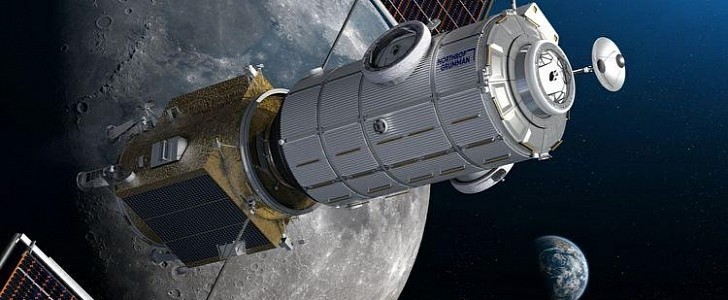Airbus Crisa, a subsidiary of Airbus Defence and Space, has recently signed a contract with Northrop Grumman to develop the power system for NASA's Habitation and Logistics Outpost (HALO), a module part of the future Gateway Moon-orbiting space station. HALO will provide basic life support to astronauts as they prepare to travel to the lunar surface.
Smaller than the International Space Station (ISS), the Gateway will serve as a rendezvous point for future astronauts heading to the lunar surface as well as a stepping stone to deep space exploration.
The station will initially have two modules known as the Power and Propulsion Element (PPE) and Habitation and Logistics Outpost (HALO). It will ultimately have five modules that will be added as construction of the outpost advances.
The PPE module will have 60-kilowatt solar arrays that will provide power and thrusters that help the Gateway maintain attitude control. HALO will serve as a temporary home for the astronauts, and it will include multiple docking ports, as well as room for science operations and stowage.
Several Gateway international partners will make contributions to the lunar outpost, providing additional modules, refueling capabilities, and other enhancements. Crisa will be in charge of the development power management and distribution (PMAD) system, which will manage the electricity from the solar panels mounted on the PPE.
It will deliver power to the station and its equipment. Not only that, but it will power up the life support system, ensuring the crew's safety. It will also take care of the illumination, communication systems, and scientific investigations, and it will keep the module's battery charged and ready for use when the panels don't get enough sunlight.
Last year, in February, NASA selected SpaceX to provide launch services for PPE and HALO. Once completed, the modules are expected to take off together on a Falcon Heavy rocket from NASA's Kennedy Space Center in 2024.
When fully functional, the Gateway is supposed to be capable of housing astronauts for a period of between 30 to 60 days. The station will be placed in an orbit that will take it within 1,500 km (932 miles) to the lunar surface at its closest, and 70,000 km (43,495 miles) at its farthest.
The station will initially have two modules known as the Power and Propulsion Element (PPE) and Habitation and Logistics Outpost (HALO). It will ultimately have five modules that will be added as construction of the outpost advances.
The PPE module will have 60-kilowatt solar arrays that will provide power and thrusters that help the Gateway maintain attitude control. HALO will serve as a temporary home for the astronauts, and it will include multiple docking ports, as well as room for science operations and stowage.
Several Gateway international partners will make contributions to the lunar outpost, providing additional modules, refueling capabilities, and other enhancements. Crisa will be in charge of the development power management and distribution (PMAD) system, which will manage the electricity from the solar panels mounted on the PPE.
It will deliver power to the station and its equipment. Not only that, but it will power up the life support system, ensuring the crew's safety. It will also take care of the illumination, communication systems, and scientific investigations, and it will keep the module's battery charged and ready for use when the panels don't get enough sunlight.
Last year, in February, NASA selected SpaceX to provide launch services for PPE and HALO. Once completed, the modules are expected to take off together on a Falcon Heavy rocket from NASA's Kennedy Space Center in 2024.
When fully functional, the Gateway is supposed to be capable of housing astronauts for a period of between 30 to 60 days. The station will be placed in an orbit that will take it within 1,500 km (932 miles) to the lunar surface at its closest, and 70,000 km (43,495 miles) at its farthest.






